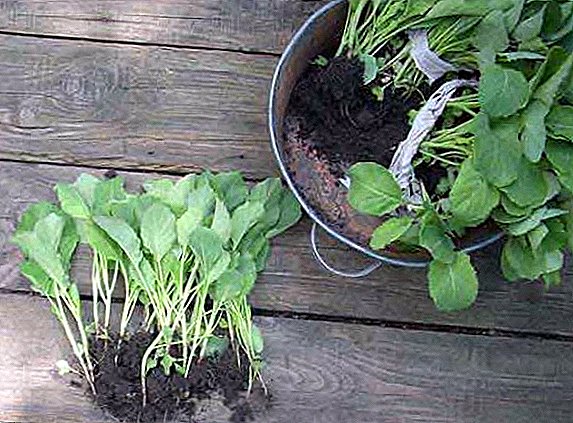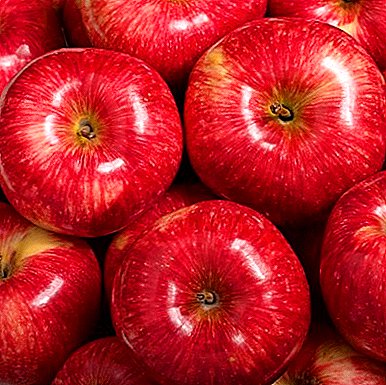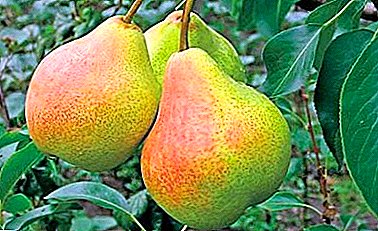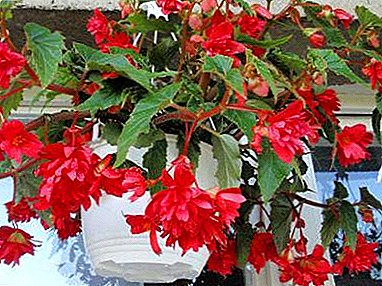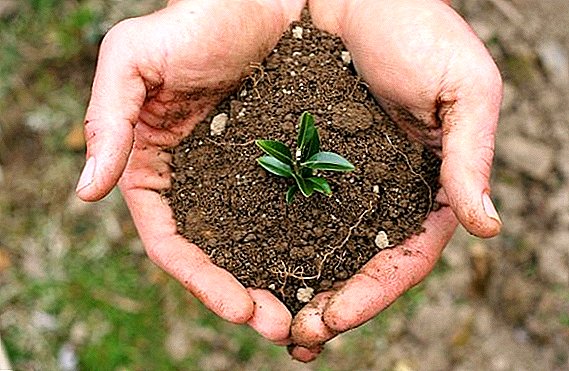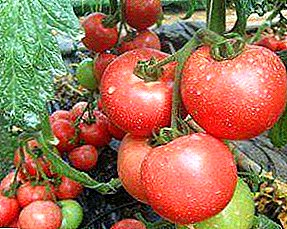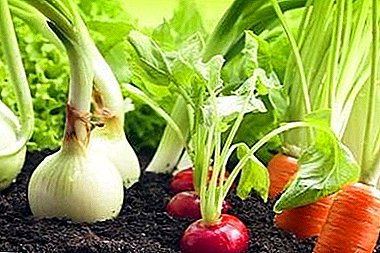
The basic rules for planting tomatoes and caring for them are known to every gardener. This plant is so common among vegetable growers that each of them has its own rules, characteristics, and growing skills.
Some try to sow the seeds in advance, pick down young shoots and enjoy the contemplation of sturdy bushes. Others at this time only recall the beginning of the tomato season. Tomatoes are so amazing plants that both methods have a right to exist.
Distinctive features of the two methods of cultivation of tomatoes at home
Most often, vegetable growers under the pick do understand simply transferring seedlings from a common container into individual containers. Growing tomatoes without picking is also possible. In some cases, it is this technique that turns out to be optimal.
Without picking, seedlings are grown:
- in separate containers (plastic cups and peat - humus pots);
- in boxes with cardboard partitions;
- in film envelopes;
- in peat tablets.
 All these methods of planting can be modified and supplemented, adjusting to the individual characteristics of vegetable farming.
All these methods of planting can be modified and supplemented, adjusting to the individual characteristics of vegetable farming.
The differences between the two methods mentioned above begin already when the seeds are planted in a tray with soil.
- Dates of planting seeds on seedlings without picking late - the end of spring. With picking - in February, the seeds should be in the ground. The crop is obtained at the same time.
- Seeds in the first case are sown in separate peat or plastic pots. If the seedlings are planning to dive, the tomatoes are sown in a common container with the ground.
The volume of individual containers should be sufficient not only for a small sprout, but also for the grown tomato seedling. The optimum is considered the volume of 0.6 - 0.8 liters.
- There are differences in the subsequent stages of cultivation - during the care and planting of tomatoes in open ground.
We offer to see a video of how the cultivation of tomato seedlings with and without pick is happening, and also what is the difference between these methods:
Is it possible to plant tomatoes in a non-pickled way?
Many gardeners do not consider picking the best way to get tomato seedlings. They prefer to sow the seeds in separate trays or glasses, filling them with soil only a third. Extra shoots are cut (do not pull out, so as not to disturb the root of the remaining seedlings). Gradually, earth is poured into the container. The root system at the same time becomes stronger and less vulnerable to diseases.
Pros and cons of growing in a common container
Pluses picking seedlings:
- The ability to plant a large number of seeds in a limited area (total capacity).
- Picks do not allow the roots to overlap and get injured when a sprout is transplanted into the ground.
- Ability to calibrate. Allows you to select the most powerful plants.
- Availability of tomato cultivation on heavy clay soils. The root system at the pick sprouts will be located closer to the ground surface, so air and water will become more accessible.
Minuses:
- In the total capacity of seedlings increases the risk of falling ill. Overcrowded seedlings are poorly ventilated. Humid air stagnates and creates conditions for the occurrence of fungal diseases.
- The complexity of the process of picking. Attention is paid to each thin germ.
- Big time investment. Sometimes it is necessary to dive 2 - 3 times.
- The soil mix requires much more (both for a common container and for an individual).
- Injury to the root.
Pros and cons of growing in individual containers
 Pros:
Pros:
- Reduced period of survival of seedlings after planting in the ground.
- The plant avoids stress, as the shoots are transplanted along with a lump of soil in which they grew from the time of sowing.
- Taproot tomato without picking up seedlings can grow up to one and a half meters deep. Therefore, this method of cultivation is preferable for farms with interruptions in irrigation.
- This method is easier. Saves time and effort. Sowing of seeds is carried out directly into the ground without transplanting.
- Harvesting starts at the same time as pickled tomatoes or even earlier.
Disadvantages of growing without picking:
- Individual tanks take up a lot of space.
- It is difficult to provide all seedlings with sufficient sunlight.
- Unpicked sprouts planted into the ground are higher than peaked shoots and therefore they need support and garters immediately.
Step-by-step instructions for sowing seeds without a pick method
Next, tell you how to plant and grow tomatoes at home without picking. Growing seedlings of tomatoes begins with sowing seeds in separate containers.
Seed treatment:
- Disinfect seeds in a pale pink solution of potassium permanganate for 15 to 20 minutes.
- Wrap in a damp cloth and leave them for three days in a warm, well-lit place.
- Make sure the fabric does not dry out. Add water as needed.
- As soon as the grains swell and begin to peek, prepare the soil and containers for planting.
Important! Seeds in a colored casing do not require treatment.
Capacity Requirements:
- the tray must have drainage holes (for plastic cups);
- Be sure to install it on the tray to drain excess moisture.
Soil requirements:
- take the soil loose and fertile;
- Before sowing seeds, the soil requires disinfection (roasting in the oven, treatment with manganese solution).
 How to plant tomato seeds without picking:
How to plant tomato seeds without picking:
- To grow tomatoes without picking, containers are filled with soil by a third.
- Seeds are sown to a depth of 10 -12 mm, 2 -3 pieces in each container or cell.
- Landing do not water! The seed can tighten deep.
- Create an improvised greenhouse - cover with glass or film.
- Install containers in a warm bright place.
- To prevent the soil from drying out, it is allowed to spray the planting periodically from a sprayer.
- After the first shoots appear (usually 7 - 8 days after planting the seeds), the cups with tomatoes are moved to a cooler room.
We offer to watch a video with detailed instructions for planting tomato seeds without picking:
Care
- Thinning:
- After the appearance of the first two leaves, leave two shoots in a glass. The rest is neatly cut.
- After the appearance of 3 - 4 true leaves will leave one, the strongest and most healthy sprout.
- Hilling. As adult leaves appear (after 2–3 weeks), soil is poured into the container and the plant is spud. Tomatoes at the same time begin to actively grow additional roots. Adding land contributes to the formation of the root system.
 Watering. Seedlings are recommended to be watered with warm settled water as the soil dries.
Watering. Seedlings are recommended to be watered with warm settled water as the soil dries.- Illumination. Glasses with sprouts are required to periodically rotate relative to the light. Otherwise the seedlings will twist.
- Top dressing. Produced 2 to 3 times ready complex fertilizers for seedlings.
- Hardening 10 - 14 days before planting in the ground the seedlings are hardened. For starters in the room open the window for airing for a longer time. When the air temperature on the street is above 10 - 12 degrees, seedlings of tomatoes are carried out for 2 hours on the balcony. If the temperature is above 8 - 9 degrees, then after 3-4 days the boxes can be left on the balcony for the whole day. At night, seedlings enough cover film.
- The landing. It is produced together with the earthy ball when the following seedlings reach the following parameters:
- height will reach 30 - 35 cm;
- about 10 developed leaves;
- 2 formed inflorescences.
Important: If tomato seedlings are above 35 cm, then they should be planted in the ground in a different way. Such a seedling is considered overgrown.
A tomato seedling obtained without picking is considered quality when it is strong, with a strong root system and a strong stem.
If the seedlings are not, then during the cultivation mistakes were made.
Common mistakes and practical advice
- Poor seed quality. When choosing seeds, one should give preference to well-known producers. Pay attention to the shelf life of the seed.
Do not use seeds of unknown origin and shelf life. You can lose precious time.
- The use of poor quality and unprepared soil. It is advisable to buy ready-made soil mix. If the soil is prepared on its own, then you should follow the recommended composition. Be sure to treat the soil mixture from pests and diseases.
- Wrong tank selection may lead to decay of the roots. The seedling container should be well drained, ventilated and suitable in volume.
- Attempts to process purchased seeds. The finished seeds have already undergone preplant treatment.
- Failure to comply with the timing of planting seeds. The table of planting dates is always indicated on the seed packaging. If these deadlines are not observed, the seedlings will be weak or overgrown.
- Too deep planting seeds. The embedding depth must not exceed two seed diameters.
 Thickening of crops. Do not be sorry to cut off the extra shoots. Seedlings just have little space and they can not develop normally. The result is weak, fragile seedlings.
Thickening of crops. Do not be sorry to cut off the extra shoots. Seedlings just have little space and they can not develop normally. The result is weak, fragile seedlings.- Watering immediately after sowing. Seeds are planted in a moist soil and do not need additional watering. The latter will lead to the pulling of the seed into the ground and they will not be able to germinate in time.
- Mistakes in the care. Violation of the temperature regime, lighting, timing of watering and feeding.
- Ignoring pests and seedling diseases. Having found troubled signs, one cannot hope that everything will pass by itself. It is necessary to find the reasons, and to take measures to eliminate the problem.
- Hardening Neglect will lead to the death of the plant with a slight freezing after planting in open ground.
- Overgrown seedlings take root poorly. If it is not possible to land the seedlings in time, watering is limited and the hardening temperature decreases.
- Growing in Siberia and the Urals.
- How to grow delicious tomatoes from seeds and large size.
- Planting tomatoes with peppers and cucumbers.
Thus, the choice of high-quality seeds, compliance with the terms of their planting, as well as competent care lead to a strong and healthy tomato seedlings. And what method of cultivation to use, with or without picking, each gardener decides himself, based on his experience, the type of soil on the site, its location and other factors.


 Watering. Seedlings are recommended to be watered with warm settled water as the soil dries.
Watering. Seedlings are recommended to be watered with warm settled water as the soil dries. Thickening of crops. Do not be sorry to cut off the extra shoots. Seedlings just have little space and they can not develop normally. The result is weak, fragile seedlings.
Thickening of crops. Do not be sorry to cut off the extra shoots. Seedlings just have little space and they can not develop normally. The result is weak, fragile seedlings.